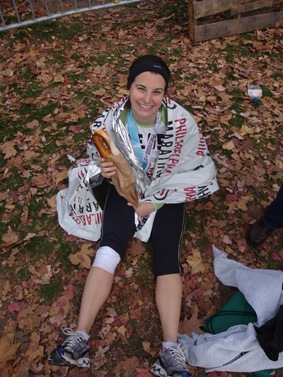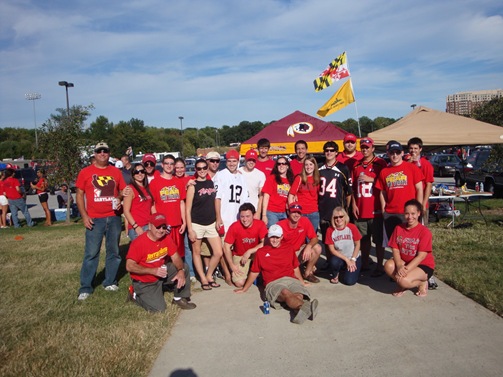Helloooo Healthy Happier readers! My name is Christine and I blog at These Happy Miles. When Ashley e-mailed me about guest posting for this series, I jumped at the chance because I’ve been following the series each week.
Helloooo Healthy Happier readers! My name is Christine and I blog at These Happy Miles. When Ashley e-mailed me about guest posting for this series, I jumped at the chance because I’ve been following the series each week.
-
nice to meet you! here i am on a sweaty summer run in central park
I also LOVE to talk about, ponder, and discuss strategies for still having a life while marathon training. Striving to balance out training with a full-time job, a long commute, family obligations, a social life, and other things like blogging, eating well, and sleeping is NOT easy.
But, like running itself, I’ve come to find out that it’s not supposed to be.
It’s this chase to fit in running and everything else you need to do each day that makes life interesting and fun and keeps you on your toes (no pun intended).
One thing’s for sure: I know I’ll never be bored.
I’m training for my second and third marathons at the moment (Chicago and Philly this Fall!) and I happily take on the life balance challenge because I just love to run and I’m obsessed with racing.
Here are my 8 tips for trying to make it all work.
- Be OK with making sacrifices. I can’t tell you how many things I’ve turned down and invites I’ve declined because I had a long run or a race in the morning. I hate missing anything fun and my family and friends may not completely understand, but sacrificing for the bigger picture (crossing the finish line with a smile after a feel-good race) is WORTH it. Other things that may be sacrificed on any given day: a good night’s sleep, a well-written blog post, a dinner that is not a PB&J sandwich.
- Open up to family, friends, bosses, and co-workers. After all, they may wonder why you’re always scooting out the door at 6PM or passing up invitations. Explain to them why you’ve made a commitment to marathon training. Also, keeping people in the know about your training holds you accountable too!
- Capitalize on gaps of time. Morning person? Set your alarm a little earlier and get in your run for the day before work. Have a gym nearby work? Do a cross training workout on your lunch hour. Night owl? Jump into your workout clothes and run right after work. Seize each and every day! And warning: don’t let yourself sit on the couch "just for 5 minutes." Just 5 minutes on the couch is never 5 minutes.
- Plan out the week. If possible, it helps to figure out which days will be obligation-heavy or late nights at work. Or, realize that’s there’s NO WAY you’ll be able to do a long run on a Saturday when you have tickets to Countryfest and will. not. miss. the pre-concert tailgate (long run successfully completed on Friday instead). Knowing in advance that you can’t run at your regular time on a particular day is key to scheduling a time when you are able to run. Prioritize your life and shift around runs on your training schedule if necessary.
- Think about regrets. I have honestly never regretted getting my bum out the door to go for a run. But I have regretted dark times when something plagued me from running (most likely just plain laziness). When you’re on that starting line with 26.2 miles ahead of you, it’s a comforting thought to know that you hit the majority of your runs and gave the training your all. Which brings me to…
- Don’t beat yourself up. Sure, there are some days during the 3-4 months of a training cycle when missing a training run is inevitable. And that’s OK. Don’t let it bring you down and just get out there again tomorrow.
- See your run time as "me" time. Running is the cheapest therapy. It gives me time to think about the day, make to do lists in my head for the next day, plan what I’ll do with the rest of the day/night, and to chill out to some good music.
- Have fun. Whether that means seeking out fellow runnerds in your area to carb load and watch a movie on a Friday night or going out to dance/dance on tables/replace all of the calories you lost during a long run that day through beer consumption on a Saturday night. I RUN for my Saturday nights and swear they are more fun after a nice, long sweat session.
And… if you’re doing it right… marathon training should be fun too.

















